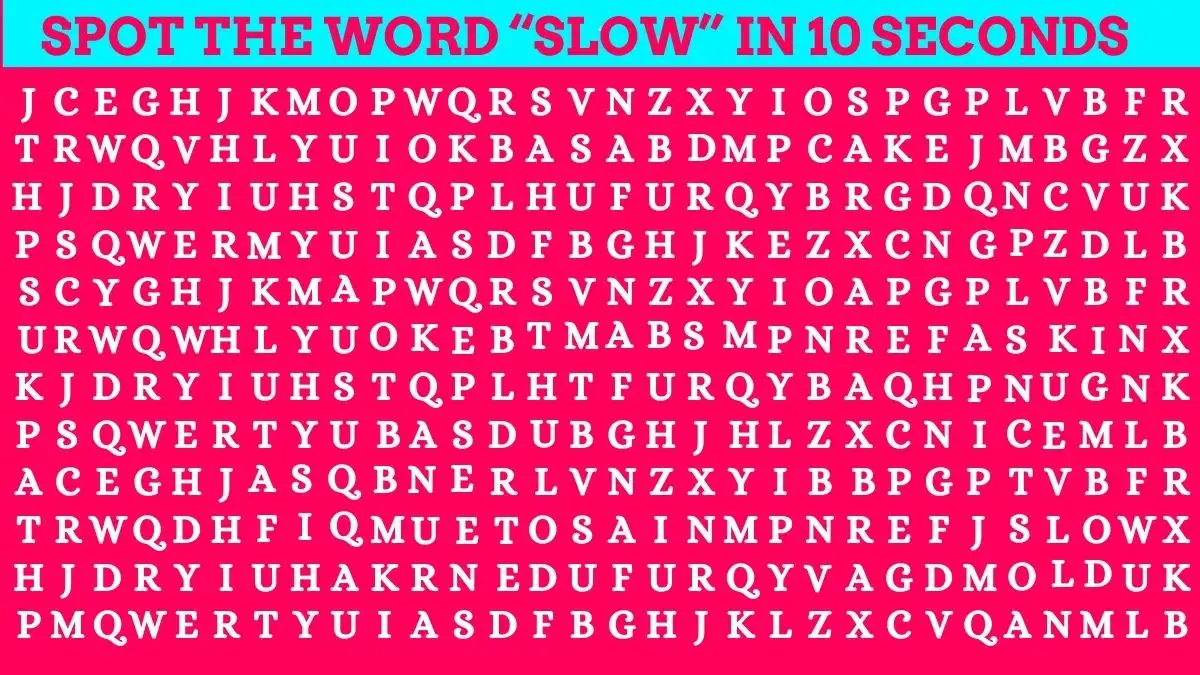- Fresherslive »
- Brain Teaser »
- Observation Brain Challenge: Only 6% of People Can Spot the Word Slow in This Image Within 10 Seconds
Observation Brain Challenge: Only 6% of People Can Spot the Word Slow in This Image Within 10 Seconds
by Sangeetha
Updated Dec 06, 2023

Brain Teaser
Brain teasers are captivating puzzles designed to challenge and stimulate the mind. Often characterized by their clever and sometimes perplexing nature, brain teasers come in various forms, encompassing visual, mathematical, or logical challenges. These puzzles are crafted to engage critical thinking, problem-solving skills, and creativity, providing a fun and effective way to exercise the brain. Whether tackling riddles, optical illusions, or numerical conundrums, individuals of all ages find enjoyment and mental stimulation in the pursuit of unraveling these enigmatic puzzles. The diverse range of brain teasers caters to different cognitive abilities, making them a versatile and engaging activity for those seeking to keep their minds sharp and agile.
Observation Brain Challenge: Only 6% of People Can Spot the Word Slow in This Image Within 10 Seconds
In this Observation Brain Challenge, participants are tasked with spotting the word "Slow" hidden within an image. The unique aspect of this challenge is that only 6% of people are expected to successfully identify the concealed word within a time limit of 10 seconds. The challenge primarily relies on keen observation skills and the ability to quickly discern patterns or shapes within the given image.

Observation Brain Challenge: Only 6% of People Can Spot the Word Slow in This Image Within 10 Seconds - Solution
To successfully spot the word "Slow" within the image, employ a systematic and thorough observation technique. Start by scanning the image methodically, paying close attention to details and shapes that may form the letters of the word. Look for any subtle variations in color, size, or orientation that might indicate the presence of the hidden word.
Consider breaking down the image into smaller sections and focus on each part individually. Sometimes, the word may be embedded or camouflaged within the surroundings, so it's essential to be attentive to visual nuances.
Remember, the key to success in this challenge is a combination of quick observation and attention to detail. With a focused approach, you may join the exclusive 6% who can swiftly identify the word "Slow" within the allotted 10 seconds. Enjoy the challenge and the satisfaction of mastering this brain-teasing observation task!

Observation Brain Challenge: Only 6% of People Can Spot the Word Slow in This Image Within 10 Seconds - FAQ
Brain teasers that keep you challenged can increase cognitive function. Life requires good problem-solving skills; playing brain games can help you hone these essential skills.
Brain teasers are suitable for kids because they strengthen problem-solving and critical thinking skills, encourage lateral thinking, and build new perspectives.







